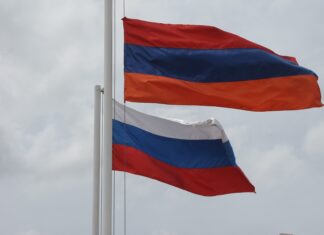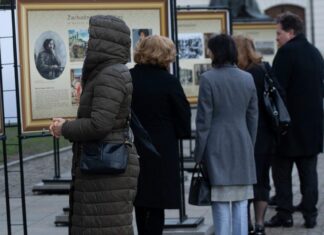VAN (RFE/RL) — In a dramatic about-face, the Mother See of the Armenian Apostolic Church has decided to boycott the upcoming liturgy at the Surp Khatch Church on Akhtamar, now in southeastern Turkey, because of Ankara’s refusal to restore a cross on its dome.
The 10th-century church will see its first mass in nearly a century on September 19, three years after being reopened as a museum following a $1.5 million renovation funded by the Turkish government. The latter has allowed Turkey’s surviving Armenian community to hold religious services there once a year.
Ankara has promoted the decision as proof of its commitment to tolerance and a gesture of goodwill towards Armenians. Still, it has resisted calls to return the church, perched on the legendary Akhtamar island in Lake Van, to the community.
Responding to a request from Archbishop Aram Ateshian, the supreme head of the Armenian Church, Catholicos of All Armenians Karekin II decided last month to send two representatives to the event. His spokesman described the program as a positive but insufficient step.
In a statement issued on Saturday, Karekin’s office said Turkish authorities had assured the Mother See that they would allow the Armenian Patriarchate in Istanbul to place a cross on the church one week before the ceremony. It said they have broken that pledge with “unfounded justifications.” Therefore, the Echmiadzin delegation opted out of attending the event.
Karekin’s initial decision to send them to the event caused controversy in Armenia. Many political groups there regard the event as a Turkish publicity stunt. President Serge Sargisian’s Republican Party spoke out against any Armenian participation in the “imitational show” on August 10.








